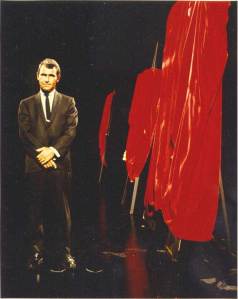 The Art of Fear is a writing series on horror cinema’s prolific usage of art as the focal point of fear.
The Art of Fear is a writing series on horror cinema’s prolific usage of art as the focal point of fear.
I’m happy to announce the launch of a new writing feature on The Girl Who Knew Too Much called The Art of Fear. Titled in homage to Vincent Price’s BBC radio programme The Price of Fear and subsequent biography, The Art of Fear focuses on horror cinema’s prolific usage of art as the focal point of fear. Below is an introduction, in the very simplest of terms, to what I hope will become a lively, thought-provoking, and entertaining discussion on two of my favorite things: art and horror.
That horror films frequently feature artwork is not a startling revelation but this noticing this brought my individual obsessions with horror and art together, kick-starting my research on horror’s influence on contemporary artists. Now, by delving into arts role in horror I can further map out connections between the two. It also raises significant questions: Why is it that painting and sculpture can easily incorporate into horror narratives? What is it about art and artists that adapt so readily into the horrific? And since visual art and cinema are two different ways in which to tell a story, how can the collation of the two in the context of the horror genre, establish a more in-depth visual and narrative experience?
Here I’ll address these questions through a discussion of films such as Picture of Dorian Gray, House of Usher, Daughters of Satan as well as the television series Night Gallery in the terms of how artwork is used as the motivating force of horror. I’ll also be looking at how the conservation and preservation of art is an integral part of apocalyptic films like The Omega Man, I am Legend, and Children of Men. This ongoing process becomes more profound and fun with each new discovery I make and I hope it’ll be the same for you!
The plan is to publish an entry for The Art of Fear each week until the series concludes (if it ever does) but, of course, this may vary from time-to-time. First up will be… Albert Lewin’s Picture of Dorian Gray (1945).
Featured so far:
The Art of Fear: Picture of Dorian Gray
The Art of Fear: The Fall of the House of Usher
Image: Rod Serling introducing an episode of Night Gallery where the artwork told the story.
 Written over fifty years ago, the latest selected quotes from Vincent Price’s I Like What I Know still profoundly resonate with today:
Written over fifty years ago, the latest selected quotes from Vincent Price’s I Like What I Know still profoundly resonate with today:


